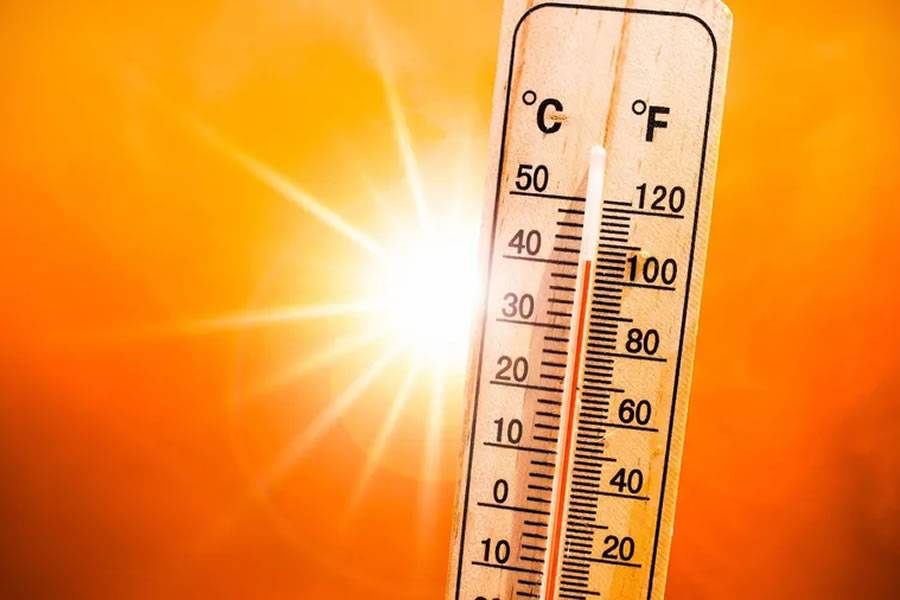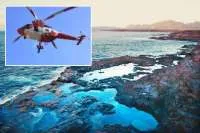Mini heatwave causes health warnings for high temperatures in the Canary Islands
- 12-07-2024
- National
- Canarian Weekly
- Photo Credit: CW
The Ministry of Health of the Canary Islands, through the Directorate General of Public Health, has extended the health risk warnings due to high temperatures until Tuesday, July 16th. The warnings affect the main tourist areas in Gran Canaria, plus the south of Tenerife, including an orange alert for Vilaflor.
The risk levels are determined using an algorithm that takes into account predicted maximum temperatures, threshold temperatures, and various risk factors across 13 "meteosalud" zones in the Canary Islands. These zones monitor temperature fluctuations and their impact on public health.
The areas currently under increased alert are:
Gran Canaria: Southern, Eastern, and Western zones (34°C) and peaks (33°C).
Tenerife: Southern, Eastern, and Western zones (34°C).
CURRENT ALERTS:
Gran Canaria: Red alert, risk level 3, until July 16th in Santa Lucía de Tirajana and San Bartolomé de Tirajana. Red alert, until July 15th in Tejeda.
Tenerife: Orange alert, risk level 2, from July 13th to 15th in Vilaflor.
SURVEILLANCE AND INFORMATION:
The Directorate General of Public Health has an epidemiological surveillance system in place to monitor the impact of high temperatures on public health. This system coordinates with healthcare and emergency centres across the Canary Islands and alerts them and the relevant municipalities about potential health risks.
Public Health also provides the media with practical advice and preventive measures to help the public cope with elevated temperatures.
TEMPERATURE THRESHOLDS AND "METEOSALUD" ZONES:
On June 17th, a new alert system was activated in 13 "meteosalud" zones, designated by AEMET for meteorological predictions. These zones, characterised by similar climate conditions, include:
Tenerife: Metropolitan area (31°C), Northern zone (32°C), Southern, Eastern, and Western zones (34°C).
Gran Canaria: Northern-capital area (32°C), High areas (33°C), Southern, Eastern, and Western zones (34°C).
La Palma: Highlands (35°C), Eastern zone (30°C), Western zone (35°C).
Lanzarote: 34°C
Fuerteventura: 34°C
La Gomera: 33°C
El Hierro: 31°C
RISK LEVELS:
The Ministry of Health has established four risk levels based on the algorithm that considers maximum forecast temperatures, thresholds, duration (minimum of three days), and specific risk factors:
Level 0 (Green): No risk
Level 1 (Yellow): Low risk
Level 2 (Orange): Medium risk
Level 3 (Red): High risk
RECOMMENDATIONS FOR HIGH TEMPERATURES
People most vulnerable to high temperatures include those over 65, infants, pregnant women, the homeless, athletes, and outdoor workers. Key recommendations are:
- Stay in cool, shaded, or air-conditioned places, and cool off as needed.
- Limit physical activity and avoid outdoor sports during peak heat hours.
- Drink water or fluids frequently, even without feeling thirsty.
- Avoid caffeine, alcohol, or sugary drinks as they can cause dehydration.
- Pay special attention to babies, young children, pregnant or breastfeeding women, the elderly, and those with health conditions that can be exacerbated by heat (e.g., heart, kidney diseases, diabetes, hypertension, obesity, cancer, mobility impairments, dementia, mental illnesses, and substance abuse).
- Wear light, loose-fitting, breathable clothing.
- Never leave anyone in a parked, closed vehicle, especially children, the elderly, or chronically ill individuals.
- Consult a healthcare professional if heat-related symptoms persist for more than an hour.
- Eat light meals to replenish salts lost through sweating (e.g., salads, fruits, vegetables, juices).
- Store medications in a cool place as heat can alter their composition and effects.
Other articles that may interest you...
Trending
Most Read Articles
Featured Videos
A Vision of Elvis Tenerife Promo
- 10-05-2025
TEAs 2025 Highlights
- 17-11-2025


























































